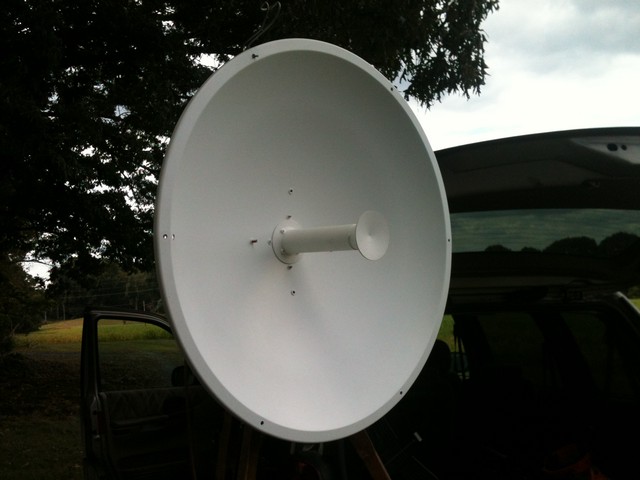
5760 MHz Antenna Test
October 2013
There are many new companies marketing high gain wi-fi antennas primarily to wireless internet service providers. Many U.S. WISP companies use the licenses free FCC Part-15 5 GHz band, 5725-5850 MHz, to link their client hub distribution points. These 5.8 backhaul links may span many miles which require high gain antennas. Some of these antennas work very well for 5760 MHz weak signal use and some are very reasonably priced. There are also some good 2.4 GHz wi-fi antennas that work well on 2304 MHz. I used a 2.4 GHz wi-fi grid to receive the Selean lunar orbiter a few years ago just using a LO and mixer as a down converter. I've used a few different 5.8 GHz wi-fi antennas over the past several years for portable reception of a beacon operating from my home. I wish I could say I've had many QSOs with these antennas but so far there just hasn't been anyone in my area to work. That will change soon as there are now several microwave operators within a few hundred miles of my location working toward getting on the band or improving their equipment.
My objective was to select the highest gain antenna I had available to replace a home brew horn that had served me well for about 24 years. Both space and wind load needed to be considered. I know my antenna range and test equipment leave a lot to be desired for proper measurements however by comparing test results using antennas of know gain I feel I have met my objective.
Below are the antennas I tested with results I obtained. One of these antennas has now replaced the home brew horn achieving a gain increase of about10 dB. For the first time I am able to at least detect the WA4PGI 5760.068 MHz beacon in FM07bw fairly consistently at 187 miles. The beacon was very strong at 11 AM local this morning.
Radio Waves SP2-5.2L
I acquired this very nice rather expensive antenna when it was retired from 6 years of service on a 15 mile path between two water tanks. It has the optional radome cover which will reduce wind load but adds some bulk and weight. I don't use the radome for portable operating because it adds weight to the tripod and covers the nice looking feed. If the feed ever gets damaged I will then wish I had installed the radome.
I measured this antenna to have 30 dBi gain at 5760 MHz using a Scientific Atlanta Standard Gain Horn as a reference antenna.
Manufacture specified gain 28 dBi 5250-5850 MHz SP2-5.2 Spec Sheet

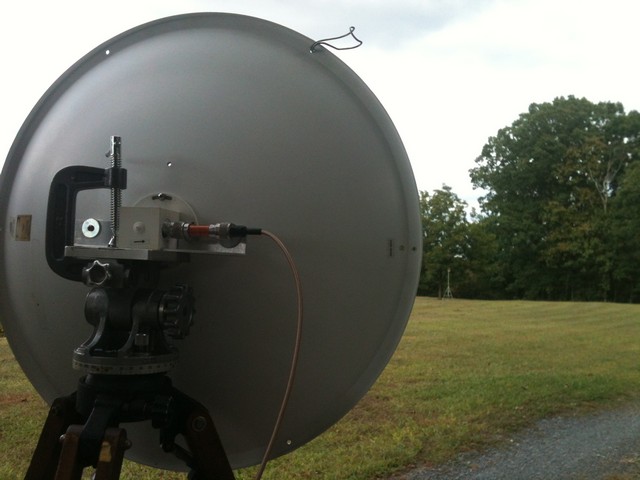
Laird GD5W-25
Test results at 5760 MHz: 24 dBi
Manufacture Specified gain 25 dBi Laird GD5W-25 .pdf
Has NF connector on about a 24 inch small coax pigtail.
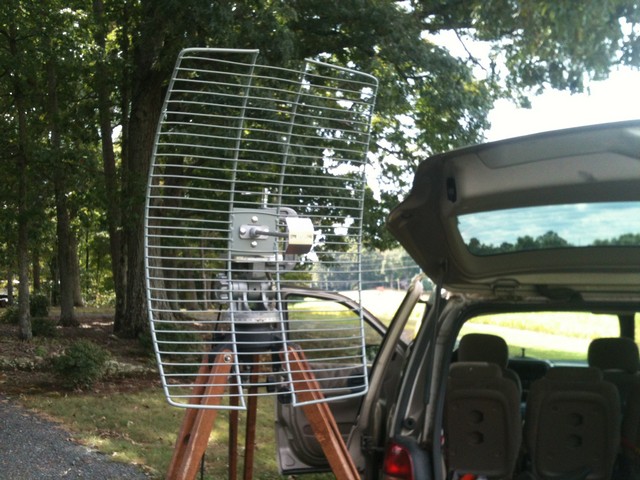
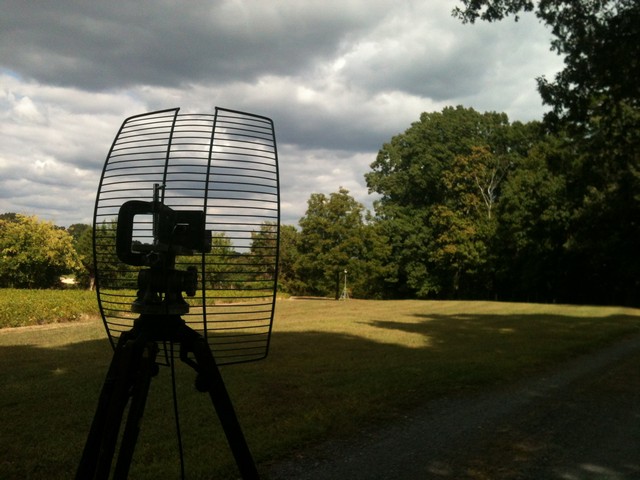
HANA Wireless HW-DCGD58-30NF
Test results at 5760 MHz: 29.5 dBi
Has standard NF connector, Grid is made of nicely coated brass instead of the usual steel or cast aluminum used for most grid antennas.
Manufacture specified gain 30 dBi HW-DCGD58-30NF .pdf
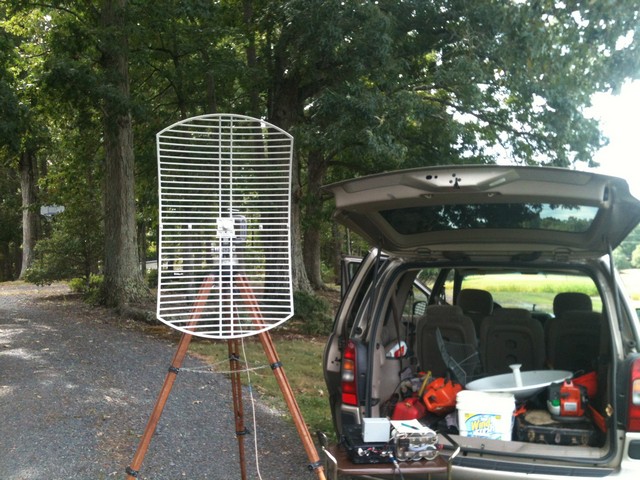
Distance from source antenna to test point was 240 feet.
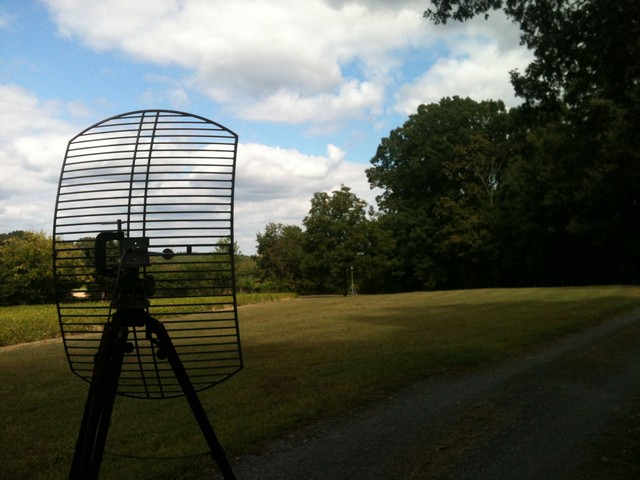
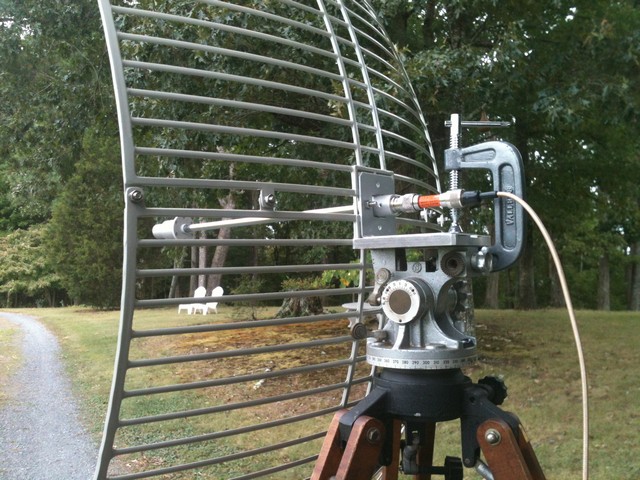
The feed can be attached to the grid in two positions. The assembly instructions did not specify which way to bolt it on. My initial test of the antenna was very disappointing finding a gain about 6 dB less than the manufacture specs. I rotated the feed 90 degrees which brought the gain up to specifications. This indicated the polarity of the feed horn wasn't initially in line with the reflector grid.
I contacted the manufacture and received this reply:
"There should be a small Red UP label on the end of the feed with that pointing UP and the grid lines also going up and down - that would be vertical, rotate the entire assembly 90 degrees for that assembly to be horizontal"
The feed looks very nice but here is no red label on the feed I received.
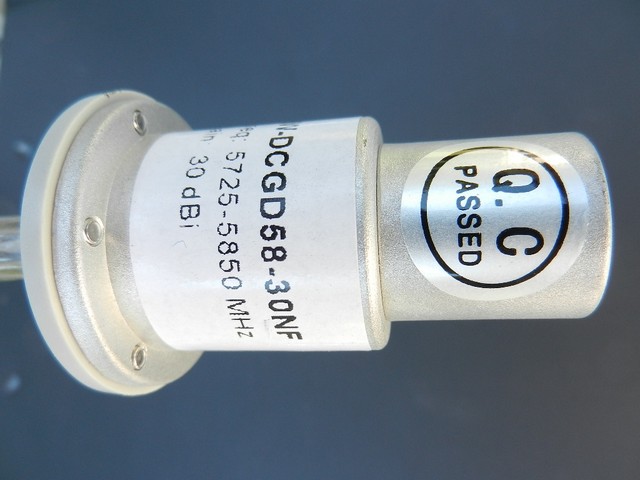
Correct position of feed mount. The feed mounting bolts are inline with the bolts holding the two grid halves together. Grid is shown in the horizontal polarization position.
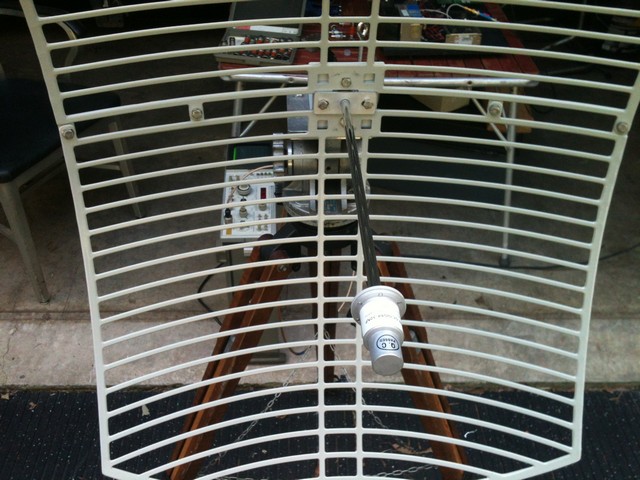
Incorrect position of feed mount below:
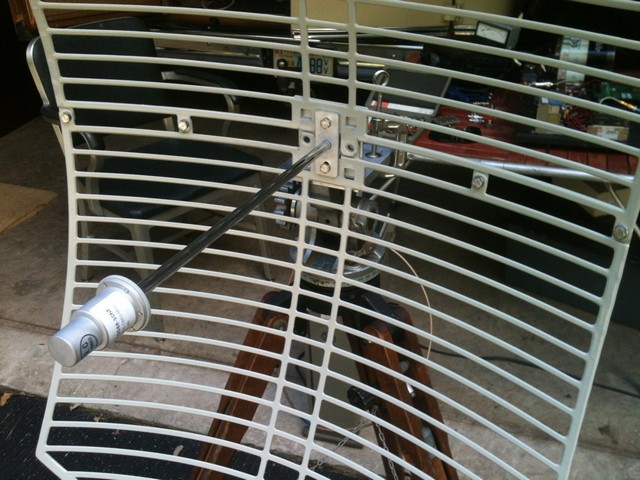
Polarad CA-LRP 1-11 GC
Yes GC "gigicycles" which indicates it's early sixties vintage
A handy cycles to Hertz converter: http://www.convertunits.com/from/cycle/second/to/hertz
Test results at 5760 MHz: 23 dBi
The manufacture chart in the .pdf below indicates a gain of about 22.5 db at 5.7 GHz. No reference made to dBd or dBi.
Either way my results just by being in the ball park makes me more confident my test procedures were accurate enough to accomplish my goal.
Polarad CA-LPR .pdf courtesy of Jeff, WA3ZKR
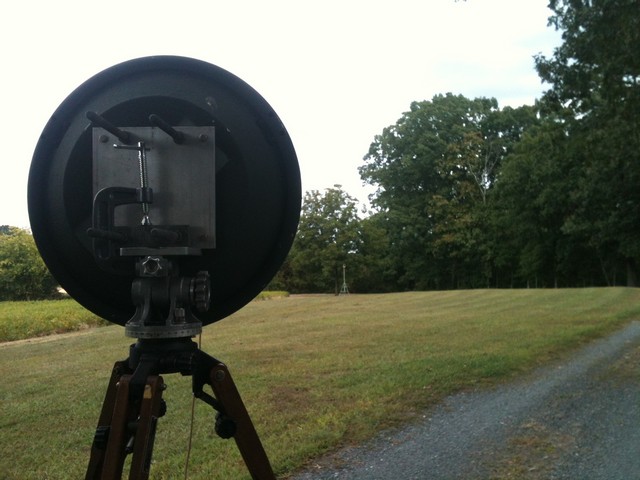
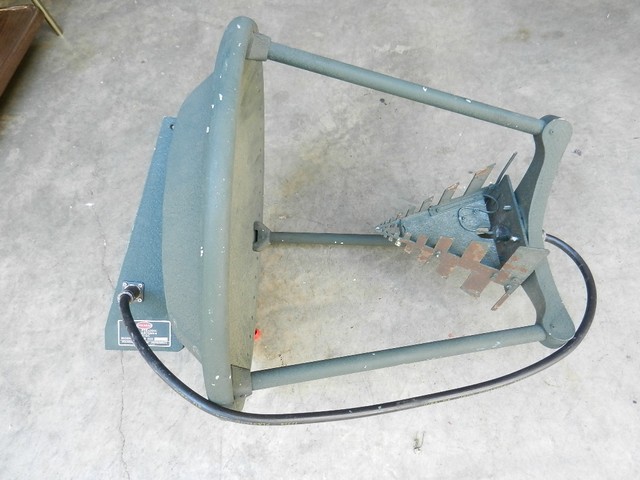
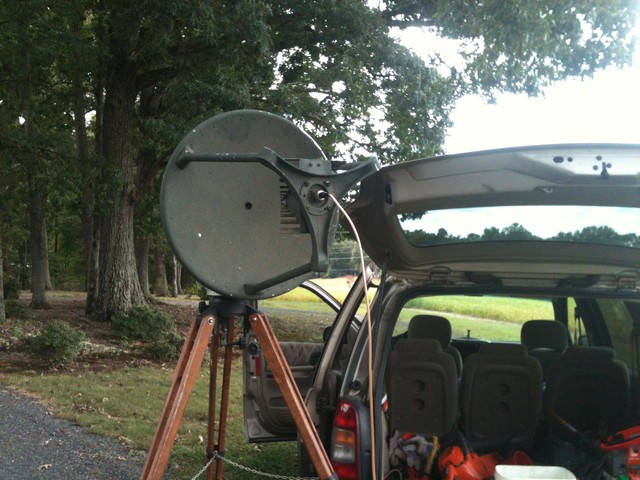
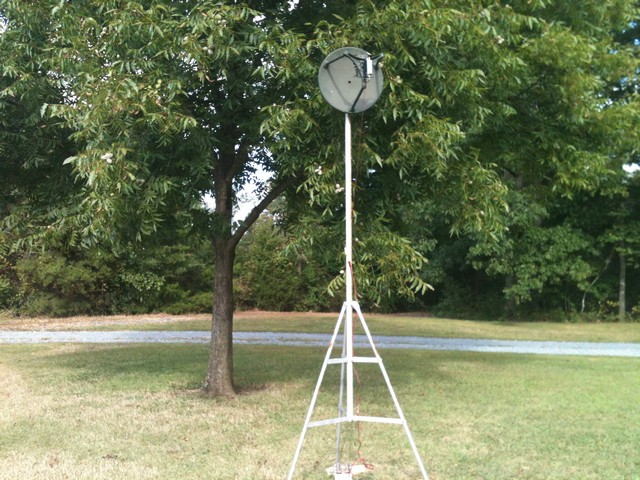
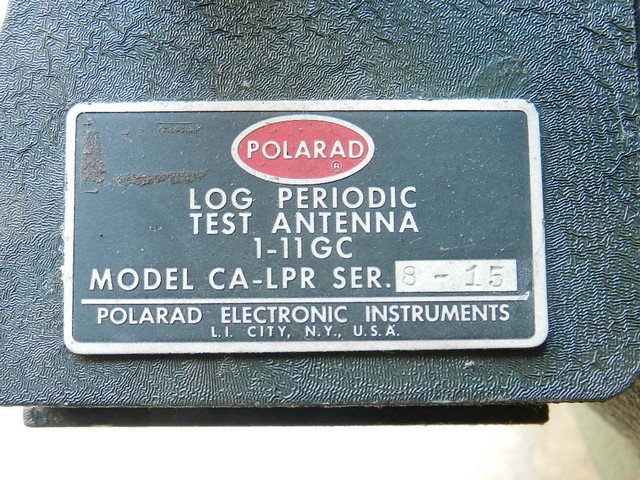
Scientific Atlanta 12-5.8 Standard Gain Horn.
Manufacture specified gain 22.1 dBi
This antenna is now marketed by MI Technologies as Model MI-212-8.2 per K4CSO
MI-212 Family of Standard Gain Horns.pdf
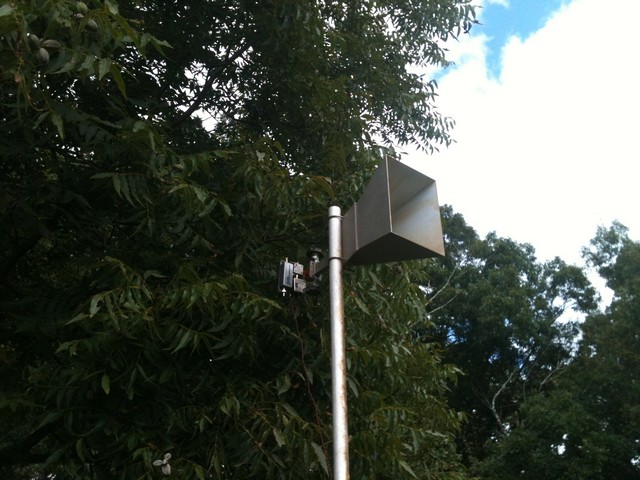
Black 22 inch diameter dish with WA3RMX tri-band feed.
This antenna has become know as a location marker for microwave operator gatherings at the Shelby Hamfest.
Test results at 5760 MHz: 24 dBi
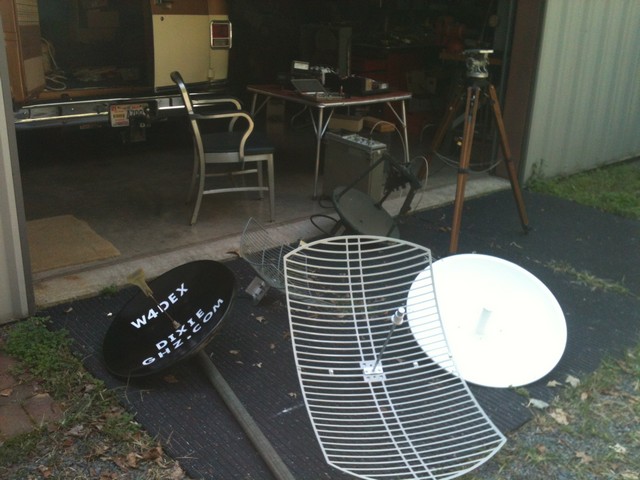
The original WA3RVX feed purchased for me by W4OJK (SK) at Central States Conference. (Late 80's ?)
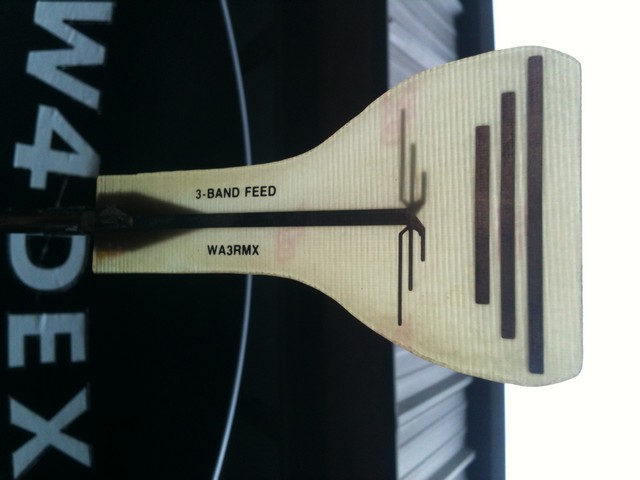
Homebrew Horn - Measured gain 20 dBi
This horn was built and put on tower approximately 24 years ago. It was used to for the 755 mile QSO with K1WHS in September 2004.
This proves an antenna doesn't have to look pretty to work.
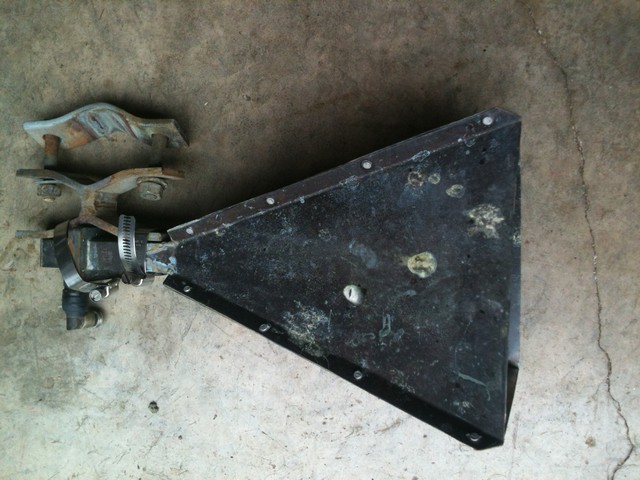
The horn window appears to have been missing for like a long time. Some vegetation debris had accumulated below the probe.
Gain was tested before and after debris removal. No detectable change in gain measured.
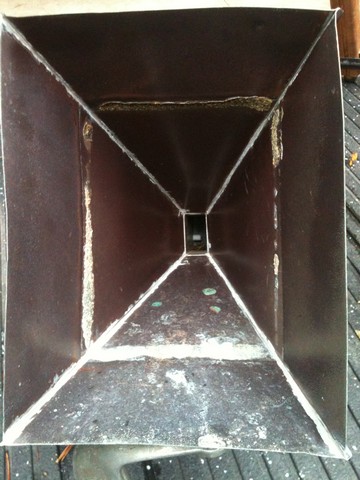
Horn before installation on tower 24 years ago.
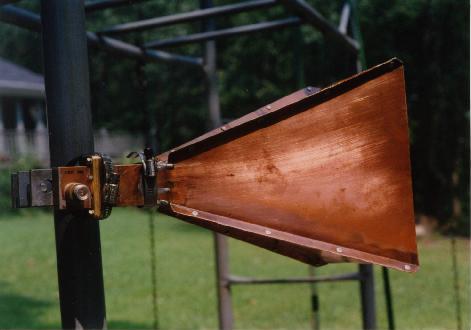
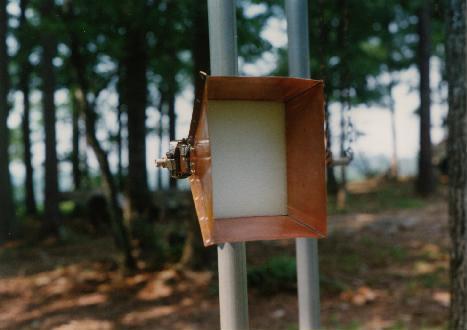
The HANA Wireless antenna met my needs of mounting in the space available and having close to 10 dB more gain than the homebrew horn it replaced. The Radio Waves dish sure would have looked nice above the 2 foot 10 GHz dish but with much more wind load. For approximately $50 I am so far very pleased with the construction and performance of the HANA HW-DCG58-30NF. It's rated at 100 watts maximum so I feel safe pumping 20 watts into the waveguide in the shack.
HANA grid mounted just above the 10 GHz dish.

Corrections, questions, comments: w4dex (at) arrl (dot) net